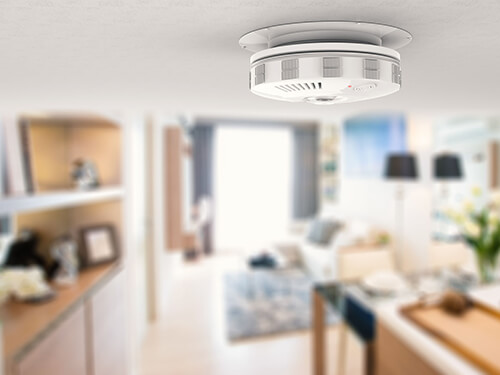January 11, 2022

Tips for Prevention of Carbon Monoxide Leaks in Furnaces
Furnaces are necessary for many households, but they can also be a significant source of high carbon monoxide. Carbon monoxide is an odorless and colorless gas produced by incomplete combustion. The presence of carbon monoxide has been linked to increased rates of heart disease, chronic obstructive pulmonary disease (COPD), and neurological damage.
Causes of High Carbon Monoxide Levels
Several causes lead to high levels of CO inside your furnace, including blocked air vents, blocked chimney flues, gas appliances installed incorrectly or not serviced regularly.
A blockage in the air vents can cause your furnace to work harder than it should, which can lead to high levels of carbon monoxide.
Your chimney flue is a significant part of the furnace, and it helps to remove the exhaust from your home. If this is blocked, it can cause the fumes from the furnace to enter your home.
Insufficient ventilation can also lead to high levels of carbon monoxide inside your furnace. Make sure that you have sufficient fresh air coming into your home to help prevent this from happening.
If you have a gas appliance in your home, it is essential to have it installed and serviced by a professional. This will help to ensure that it is working correctly and doesn’t leak carbon monoxide into your home.
How Can You Prevent CO Leaks?
If your furnace has not been installed correctly, it can lead to air leaks that allow the gas to escape. If this is the case with your furnace, you should have a professional come out and fix any holes or cracks as soon as possible. Do the following to prevent CO leaks.
Check Your Filters
Check your furnace filters every month and replace them when they are dirty. Additionally, you should make sure that the vents in your home are clear and free of obstruction.
Annual Inspection
If you have a gas furnace, it is essential to have it inspected by a professional at least once a year. During this inspection, the technician will check for any cracks or holes causing CO leaks.
Install a Carbon Monoxide Detector
A detector will alarm you if high levels of carbon monoxide are present in your home. It is a good idea to have one installed on each level of your home, especially near the bedrooms.
Proper Furnace Installation
The best and easiest way to prevent carbon monoxide leaks in your furnace is to have it installed by a professional. A qualified technician will ensure that your furnace is sealed correctly and clear all the vents.
Smoke Detector
Smoke detectors are another critical factor in ensuring your safety from carbon monoxide poisoning. Ensure that you have a smoke detector on every level of your home and that they are all in working order. Test them regularly to make sure that they will sound an alarm if smoke or carbon monoxide is in your home.
Signs Your Furnace Is Leaking Carbon Monoxide
There are several signs that your furnace may be leaking carbon monoxide. These include;
Pilot Light Color
You will notice that the pilot light is yellow or orange instead of blue. This is a sign that the furnace is not burning correctly and could be leaking carbon monoxide.
Unusual Smells
If you smell a strong, sulfur-like odor, it may be because your furnace is leaking carbon monoxide. This gas has a distinct smell and can easily be detected.
Higher Than Normal Heating Bills
If your heating bills are higher than usual, it may be because your furnace is leaking carbon monoxide. This gas takes the place of oxygen in the air, which can make you feel colder than usual.
Sudden Drop in Temperature
If there is a sudden drop in temperature in your home, it could be because your furnace is not working properly and is leaking carbon monoxide.
If you notice any of these signs, it is essential to immediately have your furnace inspected by a professional. High levels of carbon monoxide can be deadly, so it is better to be safe than sorry!
How Does a Furnace Contain Carbon Monoxide?
When it comes to the fuel-burning process, the furnace has two types of combustion chambers: primary and secondary. The gas from the utility company enters into the furnace through a pipe connected to the burner in the primary combustion chamber.
The flame from this burner heats the metal tubing inside the heat exchanger. This hot metal then transfers its heat to the air moving across it to heat the air that it will blow throughout your home.
There is a small amount of CO when there is a shortage of oxygen at this primary combustion chamber, but it usually dissipates quickly. Once the gas burns, carbon monoxide doesn’t remain inside the furnace for long periods. If you smell any gas, you should turn off the furnace and have it inspected by a professional.
However, if your furnace installation is not correct, it can lead to air leaks. This is where carbon monoxide can escape from the furnace and enter your home. It is essential to have a professional come out and fix any holes or cracks as soon as possible.
Can You Test a Furnace for Carbon Monoxide?
You can test your furnace for carbon monoxide. If you think there is a leak in the unit, it’s best to have a professional perform this test. They will be able to pinpoint the exact location of any leaks in your furnace and advise you on how to prevent them.
They do the test by using a carbon monoxide meter, which is similar to the CO detectors you have in your home. This will give them an accurate reading of exactly how much carbon monoxide is in your home.
What You Should Do in Case of a CO Leak
The first thing you should do is get everyone out of the house and call 911. Do not return to your home until the firefighters have given you the all-clear.
Once you are outside, make sure that everyone is okay and doesn’t have any symptoms of carbon monoxide poisoning. These include headache, nausea, dizziness, vomiting, and confusion.
If you have any of these symptoms, seek medical attention immediately. In the meantime, keep everyone away from your home until you can verify that there is no longer a source of carbon monoxide near it.
Having a properly functioning furnace is essential for both your comfort and safety. By following the tips above, you can help prevent carbon monoxide leaks from occurring in your furnace.
When it comes to furnaces, it is essential always to seek the advice and services of professional technicians. If you suspect that your furnace is not properly sealed or has air leaks, contact a qualified technician who can come and inspect it for you. Bear in mind that carbon monoxide is an odorless, colorless gas that can be very dangerous if it builds up in your home.
Scott-Lee Heating Company is your reliable furnace technician in St. Louis and the surrounding areas. We have extensive experience in HVAC services and can provide you with top-quality products for your heating and cooling needs. We offer 24/hour emergency services as well as free quotes, so call us today to schedule your appointment!
